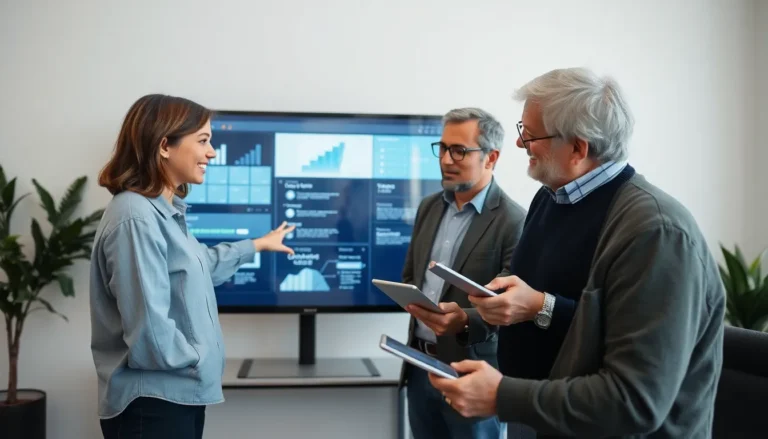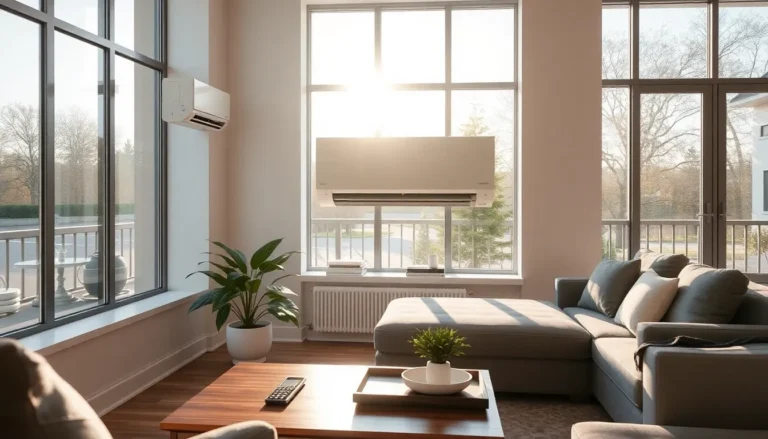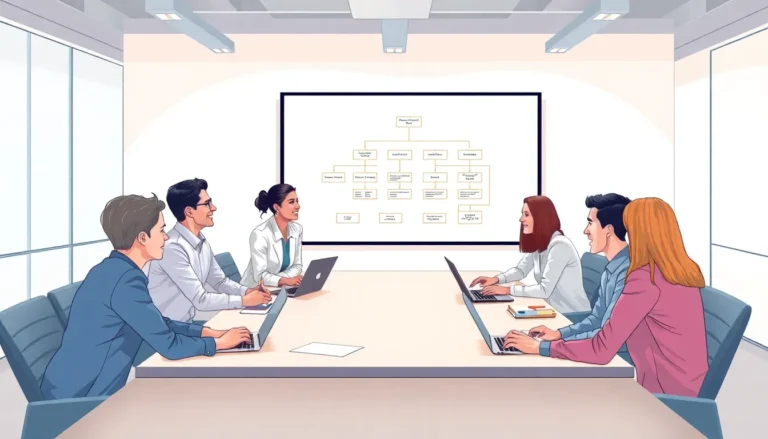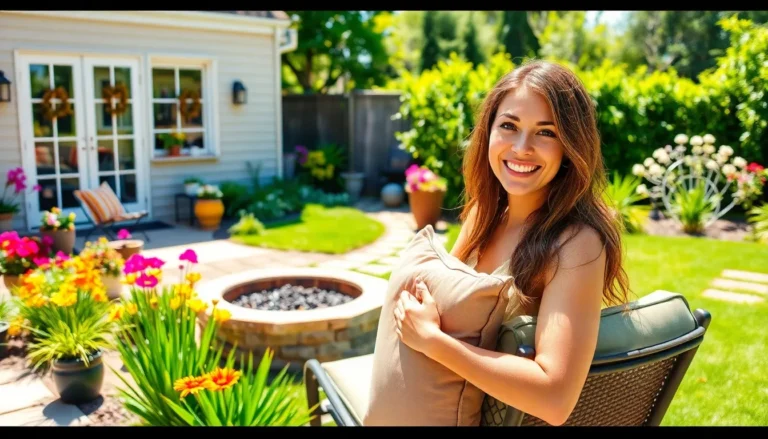Table of Contents
ToggleIn the ever-evolving world of AI, ChatGPT has become a household name for its impressive conversational skills. But wait—does it also moonlight as an artist? While it can whip up witty banter and insightful essays faster than you can say “machine learning,” the question remains: can it create pictures?
Imagine asking ChatGPT to paint a masterpiece, only to have it respond with a well-crafted poem about the beauty of a sunset instead. It’s like inviting a chef to a paint party—great at one thing but not quite the Picasso you hoped for. Let’s dive into the fascinating realm of AI creativity and uncover whether ChatGPT can indeed transform words into images or if it’s just a talented wordsmith in a world of visual artists.
Overview of ChatGPT
ChatGPT excels at generating human-like text based on user prompts. While its language processing abilities shine, creating images isn’t part of its skill set. Users often wonder if it can blend written words into visual art, but the reality remains that ChatGPT focuses solely on text generation.
This AI model leverages extensive datasets to understand language nuances, allowing for impressive conversations on diverse topics. Its purpose centers around providing informative and engaging responses, not crafting images. Instead of hosting drawing capabilities, ChatGPT delivers coherent narratives and insightful dialogue.
The distinction between language generation and visual creation reinforces the understanding of its functionalities. Other tools, specialized in image generation, like DALL-E, demonstrate how AI can produce visuals. Unlike these tools, ChatGPT’s realm stays strictly within the written domain, providing clarity and depth in communication.
Numerous applications exist for ChatGPT’s text-based talent, from content creation to answering queries effectively. By integrating language models, developers enhance user experiences across platforms, emphasizing information over imagery. This orientation ensures users receive high-quality text responses, fuelling productive interactions.
While the quest for generative art in AI continues, ChatGPT remains an invaluable resource for text-oriented tasks. Prominent sectors such as marketing and education utilize its capabilities for generating engaging content. The exploration of AI creativity progresses with tools developed explicitly for image generation, yet ChatGPT’s role highlights the significance of language in AI applications.
Understanding Image Generation
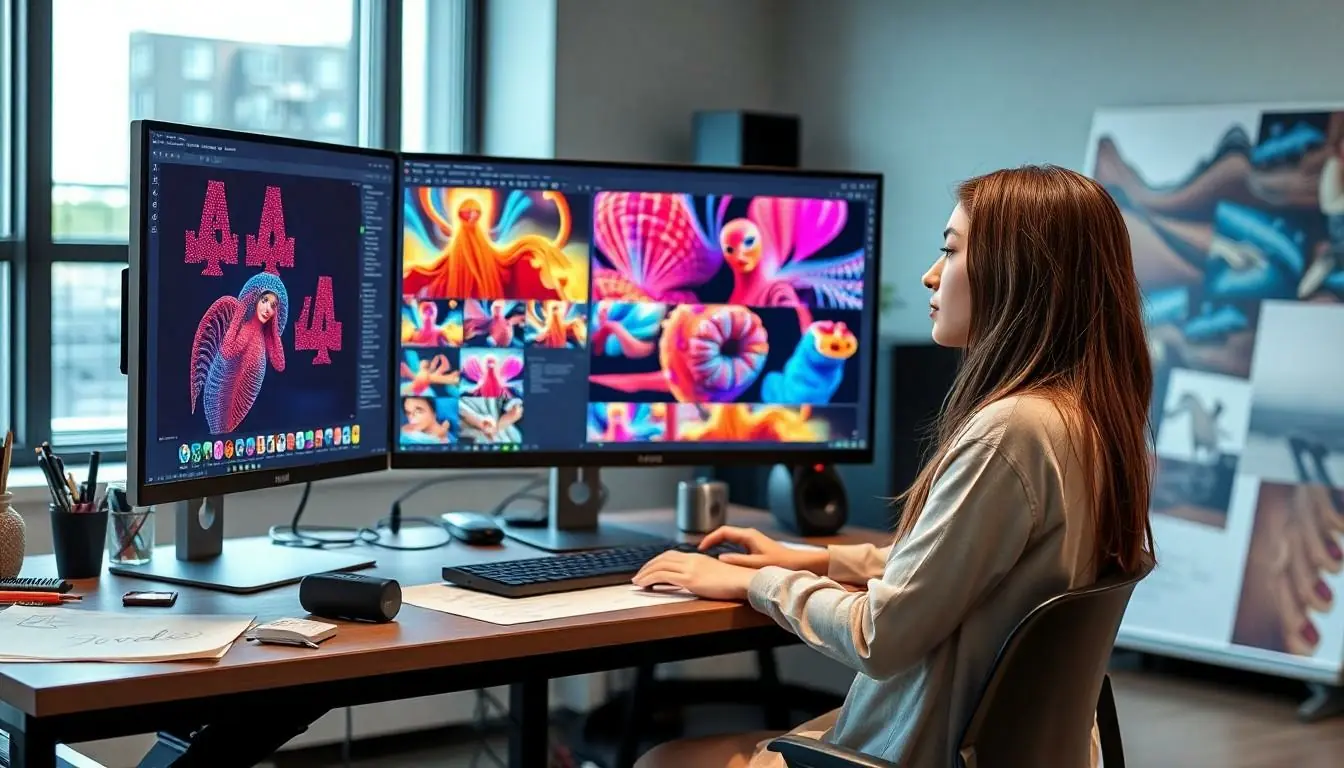
ChatGPT specializes exclusively in text generation. While users may be curious about visual creation, this AI model’s strength lies in language, not images.
AI and Visual Content
AI technologies like DALL-E and Midjourney focus on visual content. These tools can generate images based on text prompts, showcasing the creativity of artificial intelligence. DALL-E, for instance, utilizes deep learning techniques to convert descriptions into unique visuals. Midjourney employs similar methodologies to produce artistic images. AI-generated visuals are commonly applied in various fields, including graphic design and advertising, highlighting their growing importance in modern content strategy.
Comparison with Other Generative Tools
ChatGPT differs significantly from generative image tools. Unlike DALL-E, it cannot create images but excels at crafting narratives and engaging dialogue. Users seeking visual outputs will find dedicated AI models better suited for that task. In contrast, ChatGPT’s skills shine in text-based applications like writing, summarizing, and answering questions. This difference highlights the distinct roles these AIs play, with text-focused models enriching communication while image-generating models enhance visual representation.
The Role of ChatGPT in Visual Creation
ChatGPT specializes in generating text, not images. Its design focuses on language comprehension, conversation, and information delivery.
Text-to-Image Capabilities
AI models like DALL-E and Midjourney excel in text-to-image generation. These tools transform written prompts into detailed images, showcasing a different aspect of AI creativity. The process involves neural networks that interpret descriptions and produce visual representations. While ChatGPT does not possess this ability, it serves as a beneficial partner for those using image-generating models by providing context and detailed descriptions that enhance visual creation.
Limitations of ChatGPT in Image Creation
ChatGPT lacks the capacity to create images. Its algorithms prioritize text-based output, ensuring clarity in conversations over visual art. Several users inquire about image creation, often confused by ChatGPT’s advanced linguistic skills. Despite its impressive capabilities in language, generating visuals requires distinctly different technology frameworks. As a result, ChatGPT focuses exclusively on text, while other AI models are designed for visual artistry. This specialization highlights the boundaries between text generation and image creation in the realm of AI.
User Experiences and Case Studies
ChatGPT’s potential lies in enhancing user creativity and providing supportive feedback. Many users tap into its extensive language generation capabilities for various applications.
Creative Uses of ChatGPT
Multiple users leverage ChatGPT for brainstorming ideas or developing stories. Marketing professionals find it useful for creating compelling copy that resonates with target audiences. Authors often turn to ChatGPT for writing prompts, utilizing its suggestions to overcome writer’s block. Designers may use the tool to generate product descriptions or thematic concepts, enriching visual projects. Given its text-centric functionality, ChatGPT serves as a collaborative partner in numerous creative endeavors.
Feedback from Users
User responses highlight ChatGPT’s effectiveness in producing coherent narratives. Enthusiasts praise its ability to generate engaging dialogue that captures attention. Some users appreciate the quick turnaround time for content generation, aiding in project completion. Others express gratitude for the depth of information ChatGPT provides during conversations. Overall, these insights reflect a positive reception, emphasizing its role as a powerful text-focused assistant in various fields.
Future of AI in Image Generation
AI’s role in image generation continues to evolve rapidly. Several technologies currently dominate this field, such as DALL-E and Midjourney, offering impressive visual outputs based on textual descriptions. These models utilize deep learning to interpret and transform written prompts into unique images.
Growth in AI image generation impacts various industries significantly. Graphic design professionals increasingly rely on these technologies for creating stunning visuals, while advertisers use them to produce eye-catching marketing materials. Enhanced capabilities in AI also lead to more personalized content, meeting specific user needs effectively.
Collaboration between text-based AI models like ChatGPT and image generation tools proves beneficial. ChatGPT provides in-depth context and detailed descriptions that enhance the output quality of visual creations. By combining strengths, users can achieve more refined results in their creative projects.
Future advancements indicate a potential for seamless integration between text and image generation. As AI technology progresses, it may enable users to convey complex ideas visually with minimal effort. Innovations promise a landscape where creating visual art becomes intuitive, encouraging broader participation in creative fields.
Enhanced understanding of user prompts drives improvements in AI systems. These innovations not only facilitate the artistic process but also democratize access to creative tools. User feedback plays a pivotal role in shaping these advancements, ensuring the technology aligns with the needs of creators in diverse sectors.
Overall, the future of AI in image generation presents exciting opportunities. As capabilities expand, industries may witness a transformation in how visual content is produced, integrating text and image generation processes in new, innovative ways.
ChatGPT stands out as a powerful tool for text generation but doesn’t venture into the realm of image creation. Its strengths lie in crafting engaging narratives and providing insightful dialogue, making it an invaluable resource for writers and marketers alike. While it can’t produce visuals, it complements image-generating models by offering contextual support and detailed descriptions.
As AI technologies like DALL-E and Midjourney continue to evolve, the collaboration between text and image generation will likely enhance creative processes. This partnership can democratize access to artistic tools and transform the way visual content is produced. Embracing these advancements will pave the way for innovative approaches in various industries, enriching the creative landscape.


